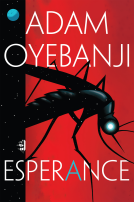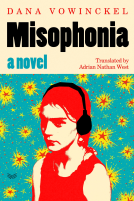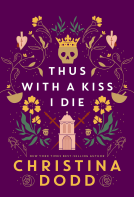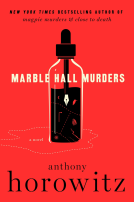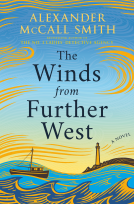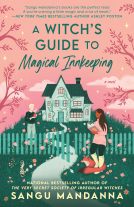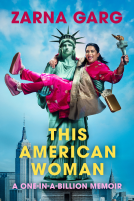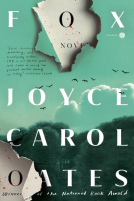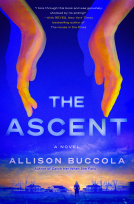
A Door in the Earth
by Amy Waldman
This title was previously available on NetGalley and is now archived.
Send NetGalley books directly to your Kindle or Kindle app
1
To read on a Kindle or Kindle app, please add kindle@netgalley.com as an approved email address to receive files in your Amazon account. Click here for step-by-step instructions.
2
Also find your Kindle email address within your Amazon account, and enter it here.
Pub Date Aug 27 2019 | Archive Date Nov 27 2019
Talking about this book? Use #AdoorInTheEarth #NetGalley. More hashtag tips!
Description
For readers of Cutting for Stone and The Reluctant Fundamentalist, a "breathtaking and achingly nuanced" (Kirkus, starred review) new novel from the author of the national bestseller The Submission about the journey of a young Afghan-American woman trapped between her ideals and the complicated truth.
"One of the essential books of the post-9/11 era." —George Packer, author of The Unwinding
Parveen Shamsa, a college senior in search of a calling, feels pulled between her charismatic and mercurial anthropology professor and the comfortable but predictable Afghan-American community in her Northern California hometown. When she discovers a bestselling book called Mother Afghanistan, a memoir by humanitarian Gideon Crane that has become a bible for American engagement in the country, she is inspired. Galvanized by Crane's experience, Parveen travels to a remote village in the land of her birth to join the work of his charitable foundation.
When she arrives, however, Crane's maternity clinic, while grandly equipped, is mostly unstaffed. The villagers do not exhibit the gratitude she expected to receive. And Crane's memoir appears to be littered with mistakes, or outright fabrications. As the reasons for Parveen's pilgrimage crumble beneath her, the U.S. military, also drawn by Crane's book, turns up to pave the solde road to the village, bringing the war in their wake. When a fatal ambush occurs, Parveen must decide whether her loyalties lie with the villagers or the soldiers—and she must determine her own relationship to the truth.
Amy Waldman, who reported from Afghanistan for the New York Times after 9/11, has created a taut, propulsive novel about power, perspective, and idealism, brushing aside the dust of America's longest-standing war to reveal the complicated truths beneath. A Door in the Earth is the rarest of books, one that helps us understand living history through poignant characters and unforgettable storytelling.
Advance Praise
"With A Door in the Earth, Amy Waldman more than confirms the great talent that she showed in her first novel, The Submission. A Door in the Earth plays on true events in Afghanistan—a country Waldman knows well from her career as a journalist—but wholly reimagines them in a way that raises urgent questions about the ethics of 'saving' people we don't know. I haven't read anything more acute about the consequences of good American intentions sent abroad. Waldman's moral vision, spare and unsparing prose style, and feel for the way history upsets settled lives all make A Door in the Earth one of the essential books of the post-9/11 era." —George Packer, National Book Award winner for The Unwinding
"Amy Waldman brings her fierce intelligence and breathtaking descriptive powers to bear in this brilliant, unsentimental novel about what happens when Americans go adventuring abroad. The author's vast experience in the region is evident in the vividness with which she creates the social world of an Aghan mountain village. But the miracle of A Door in the Earth is that a novel which tackles such urgent and necessary questions of politics, history, and the compromises of war can also be so unflaggingly searing and gripping, and bring its characters so indelibly to life." —Nell Freudenberger, New York Times bestselling author of Lost and Wanted
"Some stories stick with you, becoming like your own memories. When I finished the last page of this book I could've sworn it had all happened to me." —Elliot Ackerman, National Book Award finalist for Dark at the Crossing
"Through a kaleidescope of shifting perspectives, Waldman delivers a breathtaking and achingly nuanced examination of the grays in a landscape where black and white answers have long been the only currency. A bone-chilling takedown of America's misguided use of soft power." —Kirkus Reviews (starred review)
Available Editions
| EDITION | Other Format |
| ISBN | 9780316451574 |
| PRICE | $28.00 (USD) |
| PAGES | 416 |
Featured Reviews
 Elyse W, Reviewer
Elyse W, Reviewer
For those who want a compelling read, a page turning intimate historical novel ...
with elegant style and thoughtful insight....this is THAT NOVEL!
I absolutely loved it!!!!!
Amy Waldman’s unblinking look at medical patient care in Afghanistan-post-9/11 era, one of the poorest healthcare systems in the world - unfamiliar with western practices - is astounding and ambitious. We look at misunderstandings, mistreatment, and misdiagnosis.
Amy Waldman considers the issues particular to women in Afghanistan....examines the complexities of global development - the changing role of women in non-Western cultures - ethical controversies- in A REMOTE AFGHAN MOUNTAIN VILLAGE!
There was so much that I related to in this novel. The storytelling filled in holes from my own experiences of living in Berkeley- being a student at Cal - then leaving the country to travel the world for the next two years. In the early 70’s, I, too, traveled to Afghanistan. Many memories were brought back to me - both in Waldman’s detailed descriptions in Berkeley and Afghanistan.
I’ve never forgotten those breathtaking mountains and Afghanistan.... colors changing from browns and greens to lavender and purple and smoky blues. It’s an
incredible sight.
Amy Waldman mentions ‘The Hippie Trail” during the 1970’s. Most of us Westerners who took it - definitely - didn’t have a name for it at the time. But history gave it the right label. I was fascinated that this story was written post 9/11.
She filled in historical understanding for me.
The main character- Parveen Shamsa - a College Senior -studied medical anthropology…which looked at how people in other cultures treated medical problems.
She says:
“I had assumed Kabul would be a hardship. I wasn’t prepared for its comfort, it’s mix of decadence and familiarity.
In the 1970s, it had been a stop on the “Hippie Trail”,
the overland route that young Westerners took from Europe to South Asia.
The mere name evoked a loose-limbed morality. Now, in the long wake of 9/11, it was inhabited by a new round of expats, do-gooders, and profiteers, three groups which proved not to mutually exclusive categories”.
Parveen’s inspiration to go to Afghanistan in the first place, was from a memoir she read, ( fictional for this novel’s purpose), called “Mother Afghanistan”, by Gideon Crane. The deeper w get into the storytelling...Parveen Discovers fabrications, lies, coverups, Major discrepancies from her experiences in village than what Crane wrote in his book.
Not everything was cozy comfortable when Parveen arrived in Kabul....unless you consider it - ha - comfortable being driven by a stranger -Issa - on an unmarked and unpaved road - single dirt lane - in a Land Cruiser bouncing over peddles - traveling this way for two days - and hungry.
Parveen slept in one room - on a bedroll of straw with only one hanging lightbulb- in a room with other women and children and goats.
No cell service, internet, computers, television...
(And coffee??)....
One room...for sleeping and eating, that everyone, (adults, 9 kids, and animals), shared together.
During the day they stacked the bedrolls in a corner.
In the compound yard - were three goats, a handful of chickens, four cows, and a donkey. Piles of hay, a vegetable garden, a pomegranate tree, an outhouse, manure.
Eventually- Parveen ‘paid’ for her own room - valuing solitary. Over time, she questioned Western solitary confinement.
The village that Parveen arrived at wasn’t the most conservative part of the country, yet married women still had to cover themselves - wear the chadri- over their heads.
“The Village had no visual clutter. No billboards, no advertisements, no graffiti. No names on street signs, no numbers on the homes. The village was washed clean of words. Most of them didn’t know how to read, and anyway they didn’t seem to need such guidance and the village where they’d live their whole lives”
One of the characters we meet is Shokoh. She was a city girl - a teenage - educated with desires to study more. She lost her loving mother - and gained a ruthless stepmother.
“Her father had sold her, in her words, into a life where there were no books to read, no paper to write on, no pencils to hold, only cow teats to grip. She was married to a man who was not only too old, but was so illiterate and dirty, who smelled of the fields and could poke his corncob in her whenever he wanted, which was often”.
The characters and dialogue are what gives this book so much intimacy.
You’ll meet, ‘Dr. Yasmeen’, ( the lady doctor)...who worked at medical clinic....and learn why it’s called “Fereshta’s House”.
When we first meet tough-cookie ‘Bina’, she is breast-feeding and kneading bread at the same time.
You’ll be introduced to Mullah’s. Mosque leaders, vicar, or master guardian - used in the Quran.
You’ll meet the kids, and I can’t imagine anyone not falling in love with nine-year-old,
Jamshid: He lost a hand in an accident .....also lost his first mother ( Fereshta). Bina becomes his new mother.
We meet Waheed who was first married to Fereshta who had been gracious and warm.. Bina ....( she’s a character to grow ‘with’....a character I grew to appreciate and understand deeper in time).
We really get to know the characters - many more I haven’t mentioned....their stories - and the ( some painfully disturbing) - trials and tribulations — with the Afghani civilians, and American soldiers ...bringing new light on the war.
The reader is left to contemplate two decades of war and how it’s rendered the healthcare in Afghanistan, Poor roads and transportation, a weak economy, lack of education, lack of physicians and nurses....
But also look at the Afghani culture around religion ( Islam), and family.
What happens when Americans bring their Western wisdom? We look at morality.. and more than one philosophical perspective on what’s right and what’s wrong.
Engrossing reading...and essential to our times!
Thank you, Netgalley, Little Brown and Company, and Amy Waldman
 Karen L, Reviewer
Karen L, Reviewer
One of my favorite novels of 2019. Amy Waldman opens a door into contemporary Afghanistan in this character-driven literary novel. The author worked as a journalist reporting for the New York Times from their South Asia bureau. Details of life and conflict when the Americans try to build a new road to a remote village ring with truth and heartbreak. Main character is recent UC Berkeley grad Parveen, who was born in Kabul but raised in California. Parveen craves connection with her cultural roots and also seeks to improve women's health. Her naiveté collides with realities of American occupation, insurgent activism, women's lives, and traditional practices. Highly recommended! Will be popular with book groups.
Young Afghan American Parveen Shamsa travels to her family’s land after recently graduating from college and reading the gut-wrenching bestseller Mother Afghanistan. She arrives to the poor-stricken and secluded village where Dr. Gideon Crane’s traumatic events happened years before, leading him to write the remarkable memoirs. As Parveen meets and befriends with the villagers, she soon discovers the discrepancies between the book and the facts of what really happened to him, to Fereshta who died in childbirth, and to the clinic which was built in her memory.
This novel is a powerful tale about the power of misinformation, of political lies, with a marvelous country and simple, beautiful people in the backdrop.
Thanks to NetGalley and Little Brown and Company for the advance copy.
 Laura H, Reviewer
Laura H, Reviewer
Writing: 4.5/5 Plot: 4/5 Characters: 5/5
A beautifully written novel that captures the heart and complexity of life in rural Afghanistan. 21-year old Parveen is an Afghani American whose parents escaped the country in 1998. Inspired by the best-selling memoir “Mother Afghanistan” by Dr. Gideon Crane, Parveen decides she wants to “help.” She arranges through Crane’s Foundation to visit the village featured in the book and in which a state of the art clinic for women’s health has been built. An anthropology student, Parveen plans to investigate the “structural reasons and power dynamics” that explain why so many Afghani women are dying. However, once established in the village, she is repeatedly surprised by how very different reality is from that described in the book.
The narrative is equal parts external description — the stunning landscape, the people, the events — and internal evolution as she learns more about her privileged status as an American and how very abstract her interests are compared to the reality of what is needed.
Well-developed characters represent a variety of factions and opinions — Berkeley Anthropology Professor Bannerjee, with whom Parveen corresponds, maintains a liberal, but abstract and condescending view of the Afghani people; Lt Col Trotter, representing the US military, believes in the military goals to help the Afghan people and yet faces ever increasing resistance from the locals; Afghani Aziz interprets for the US military, desperate to keep his job and simultaneously keep things from blowing up. All treat the truth as something to be manipulated — Trotter explains that “war was about controlling the story as much as the territory”; Aziz does not interpret exactly but manipulates statements to be more acceptable to the other; Banerjee thinks nothing of betraying Parveen for the “greater good”; and Crane invented half of his “memoir” in order to sell books and inspire donations.
The writing is beautiful and well put together. The memoir style allows multiple layers to be exposed simultaneously — observations of the village and its inhabitants are simultaneously overlaid with anthropological commentary and Parveen’s exposition on her own growing awareness. I particularly appreciated the insightful and multi-faceted commentary about Americans on the global stage — motivations, approaches, and the sad contrast between laudable aims and failing implementations.
Overall, while I did not find this book uplifting or inspiring I did find it deeply educating. Highly recommended.
Good quotes:
“It bothers you Americans that the world is the way it is, doesn’t it?”
“The first time he’d met Dr. Gideon, he said, he also had to give his story. Americans collected and offered them like they were business cards.”
“In moments of clarity she understood that the village was a backdrop against which Americans played out their fantasies of benevolence or self-transformation or, more recently, control. She was as guilty of this as Trotter or Crane. She’d come to play at being an anthropologist, and play was all it had been, because at some point, without much thought, she’d set all her anthropological work aside.”
“The urge to intervene, a high of its own, was a hard habit to break. Salvation could become an addiction, too.”
“Fiction disguised as nonfiction in the service of justice had a long and noble history. Abolitionists had invented or amplified escape slave narratives to dramatize their cause…”
And yet she read on, recognizing that the muscle of moral superiority can be a pleasurable one to exercise. Perhaps Crane, in making this warty presentation of himself, understood that too.”
“It was her first awareness that perhaps there is no self, no core, unshaped by others. From the moment we’re conscious that we’re being viewed, we’re being molded.”
“ ‘What I am here to learn is why so many women in Afghanistan are dying. Without understanding the structural reasons, without tackling the power dynamics that prevent women from having a voice, let alone proper health care, nothing will change.’ She was feeling proud of this declamation and the doctor nodded, as if she were agreeing, then said, ‘At the end of a labor, Parveen, a woman lives, or she dies. That is all that concerns me.’ ”
“To be female here was to grasp at scraps of information and sew them into the shape you imagined reality to be. Into fictions, patterned on distortions and inventions. The women needed an accurate understanding of the peril in which they lived — and the reasons for it.”
“She had, within sight, something fundamental, and also painful. which was that to be an adult was to have to make decisions and take actions that might be wrong. That might cause harm. To live was to bruise, the doctor seemed to be saying: there was no other way. Unlike Professor Banerjee or Gideon Crane, Dr. Yasmeen projected no certainty about the right path to take, the one that would avoid error and hurt; indeed, she seemed skeptical there was such a path. She didn’t think that all the answers could be had, much less claim to have them herself.”
“The digitized faces, fingerprints, and irises of men who’d never left these mountains would live perpetually in a DC suburb. Eternal life of another kind.”
 Book Trade Professional 23650
Book Trade Professional 23650
A poignant, thoughtful, intelligent look into a country and a woman's path there. Amy Waldman's portrait is enthralling...and haunting.
 Rebecca L, Reviewer
Rebecca L, Reviewer
I really learned a lot about Afghanistan, our presence, the culture, and more from this excellent story! Many things to think about. A great deal of questions along with the information. Reminds me of the Kite Runner but with a different family. One of my favorite reads of 2019. Thank you to NetGalley and the publisher for the ARC.
 julie g, Bookseller
julie g, Bookseller
This is an absorbing novel set in post 9/11 Afghanistan. An Idealistic young woman travels there inspired by a memoir of a humanitarian. She gets to experience the miss truths that inevitably guide most conflicts.
I would highly recommend! Would be an excellent book club selection.
Incomprehensibly good! I was shocked by how much I absolutely adored this novel. 5+ stars! Beautifully written. I will remember these characters for years. I'd recommend this to anyone looking for an intelligent timely read. I'm looking forward to picking up more of Amy Waldman's work!
"...the muscle of moral superiority can be a pleasurable one to exercise."
 Annie S, Librarian
Annie S, Librarian
All fiction is lies. I’m comfortable with this. But when I read Amy Waldman’s brillian novel, A Door in the Earth, I realized that I have a rule about this that I didn’t know I had before. I’m comfortable with lies when I know they’re lies. I don’t like liars if I don’t know they’re liars. (This explains why, to this day, I still loathe James Frey and Greg Mortenson.) The protagonist of this novel, Parveen Shamsa, has to learn how to discern truth from lies the hard way when she follows a story to Afghanistan, to do something great like the author of Mother Afghanistan. She is warned by everyone from her favorite professor to her family and friends, but she goes anyway, only to discover that her hero was not so heroic.
Parveen arrives in the village where Dr. Gideon Crane had the life-changing experience that led to his writing Mother Afghanistan and setting up a foundation to build clinics for women in rural villages without any kind of Western health care. It’s a noble goal and Parveen wants to be a part of that. She’s not a doctor or nurse. She has a bachelor’s degree in anthropology and vague plans to do some kind of follow up on all the good Crane’s project must have done. Except, when she gets there, Parveen discovers that the clinic is only open once a week, the sole doctor has never been paid, and a lot of confused villagers who don’t recall Crane’s visit the way it’s depicted in Mother Afghanistan.
I found Parveen equally endearing and exasperating. On the one hand, it’s hard to fault someone who really does want to go good for others. She’s curious, which appeals to me, and stubborn enough to secure funding and escorts to get to the middle-of-nowhere Afghani village. But on the other hand, Parveen is very naive. It takes her a long time to stop thinking about Crane like a messiah and finally listen to what people tell her in response to her odd (to them) questions. Slowly, Parveen learns not just that Crane is a fraud, but also bigger lessons about the futility of trying to “save” people with gestures that lack the infrastructure and education to make them bear out. I’ve seen a lot of other characters learn this lesson the hard way, as in The Far Field, by Madhuri Vijay, perhaps because this is the kind of lesson that can only be learned the hard way. Idealism has to be balanced with pragmatism. Above all, the desire to do good has to be tempered by the humility to truly learn about the people one wants to help.
As I read A Door in the Earth, I was also reminded of Leslie Jamison’s The Empathy Exams. Jamison talked about the performativity of empathy. For a lot of us, being seen to do good is as important (or more) than actually doing good. If we can make other people believe that we are good, then maybe we can become good in spite of our more selfish behavior. This desire is what drives Crane, so much so that he invents an entire personal mythology for himself. This kind of think is also represented in the novel by General Trotter, who wants to “win hearts and minds” by building a road to the village regardless of what the locals want or the problems it will cause. Trotter is more interested in doing “good” for the audience back home in America that he runs roughshod over the Afghanis, with disastrous consequences. Parveen, as she wises up and starts to let go of her rigid black and white thinking, is witness to a lot of bad behavior done in the name of good. It rattles her deeply, even if we readers might not find it so surprising.
While I have seen some of the ideas in A Door in the Earth before, I don’t want to give the impression that this book is unoriginal or derivative. I loved this book a lot. In fact, I hope I can pursue a lot of readers to pick it up because it has so much to say about things like charity, cultural understanding, the occasional futility of idealism, hope, truth and lies, corruption, and unintended consequences. It also makes Afghanistan come to life in a way that I’ve never seen before. Waldman does incredible work recreating a complex culture in an even more complex juncture in history. This book is pure brilliance.
 Abby S, Reviewer
Abby S, Reviewer
Any Walkman has written an eye opening novel of Afghanistan after 9/11 A story of the country the people their survival.A story of a young girl who is in Afghanistan on a humanitarian mission.A book to read to fall into to share with friends.An award winning novel.#netgalley #littlebrown
 Amy C, Reviewer
Amy C, Reviewer
A poignant & important story. I really enjoyed the writing & the characters. I was invested in the character's as soon as I started reading this book. I look forward to reading & discussing with one of my book clubs later this year or early next year. There's so much to discuss about this book that it would make an ideal book club selection.
I loved this book. Parveen is a young Afghan/American who travels to Afghanistan after becoming absorbed in a book written by Crane and A Door in the Earth is the story of her travels and the people she meets. More than that it's a story about the shades of grey in each of us and in each person's story. No characters are all good or all bad and nothing is ever as it seems. I smiled at Parveen's American young adult behavior and attitudes and came to admire her growth and ability to challenge herself and her motivations. Her interactions with the US military provide additional material for reflection as did the realities faced by the people of Afghanistan.
This would be a wonderful book club book as it's rich with discussion opportunities and is well written. Thanks to Netgalley and the publisher for an advance copy of this book in exchange for an honest review.
 Cheri S, Reviewer
Cheri S, Reviewer
4.5 Stars
Born in Afghanistan, Parveen Shamsa left her country of birth when she was not yet two, along with her family. So young that she had little chance to be able to recall the place where she was born. They settled in the Bay Area of California, where her father took a series of demeaning jobs, and gradually their life improved to the point where Parveen was able to attend, and graduate from UC Berkeley.
While at Berkeley, Parveen read a memoir written by a Dr. Gideon Crane, Mother Afghanistan, his story relaying his experience in a post-9/11 Afghanistan, building a maternity hospital / clinic to care for the local people in this poverty-stricken isolated location. She wants desperately to help the people and to bask in the light of Dr. Crane, walk the halls of the hospital he built with the funds sent to him, donations made by Americans whose hearts may be in the right place. Donations made to assuage their guilt. Despite her professor and her family advising her not to attempt this, she eventually goes to the village where she is politely, if not enthusiastically, welcomed.
”The sun, descending, reached into the canyon to daub rocks gold and paint the river emerald. Twilight, violet-blue, seeped in before night snuffed it. She’d never seen a darkness so thick of a driver so tense: he and Fawad stopped talking.”
Once there, and settling in among a village of men and women who seem somewhat distrustful of her in this place, little by little Parveen realizes that the pedestal she’s put Dr. Gideon Crane on is one created by fiction. The gilded image presented through his pages painted a picture that was very different from the reality. The American soldiers try, through their limited perspective, to do what they believe will be helpful to the town and the people, to further advance their cause, and bring progress to this isolated place. Progress with roads, by providing work for these people, but not understanding the cost to these people – or what will happen to them when these soldiers are gone.
Power, idealism, the manipulation of a story / news to change the perspective, or inflate the story / news in order to garner favour, or funds, or followers, this is an unforgettable read.
Pub Date: 27 Aug 2019
Many thanks for the ARC provided by Little, Brown and Company
Parveen is an Afghan-American anthropology student in California. Her progressive ideas are influenced by a driven and dynamic professor, but she becomes intrigued after reading a book by an equally charismatic American humanitarian, Gideon Crane.
In Mother Afghanistan, Crane tells a redemptive tale of how his self-indulgent life travelling was turned around by the death of a woman while he was in Afghanistan. Fereshta died because she did not have adequate maternity care. He has devoted his life since to providing a clinic and raising funds to maintain it.
Ignoring the scepticism of her professor, Parveen decides to combine her interest in Afghanistan with her academic studies. She contacts Crane’s NGO, asking if she can travel to his clinic and study the women in the community. Predictably, when she arrives in the village it isn’t quite as painted in Crane’s book and media appearances.
A Door in the Earth is beautifully observed and shows life in Afghanistan in all its complexity. It shows the shock that Parveen experiences in a world so different from her own. She speaks Dari but the world of her urban, educated family is far removed from that of the village. I particularly like the detail about the absence of the written word, how reading is the only learned activity we do involuntarily, and in the West we constantly find ourselves reading without meaning to – signs, billboards, cereal packets, all of which are absent.
Parveen lives with the dead Fereshta’s husband, Waheed, his two wives and many children, and explores the complicated dynamics of the household and the village. She learns that the relationships aren’t always as we imagine, and perhaps the only implausibility, given her background and academic interests, is that she continues to accept Crane’s version of events far longer than is credible.
We are often given an image of rural Afghanistan which suggests a static society, impervious to outside influence, progressive or otherwise. What Parveen learns is that this is a society in flux. For example, the women have only been completely covering themselves outdoors since the war brought an influx of outsiders. The equilibrium shifts again when the US Army arrives, apparently bearing gifts, along with the same translator who worked with Crane.
Parveen observes, and at times confronts, many different types of power imbalance, between genders, between people of different wealth and status, and most powerfully between the US and Afghanistan. Her odd status in the village gives her freedoms and at times power – she is able to speak to senior army officers for example, in a way that no one else in the village, male or female, can. But it also means she is an outsider.
A Door in the Earth beautifully illustrates the contingent nature of truth. When Parveen meets the translator working with the troops, she initially mistrusts the way he speaks to the villagers, feeling he is misleading them about what the army officer has said. He explains that the framing of the situation, the concepts, the worldview of the US Army and the villagers are so different it is impossible to offer them a literal translation. He is trying to create a perspective that will lead to some kind of consensus. Most of all, he is trying to survive.
The contact between the US Army and the village has consequences for a number of the characters. Even those who have apparently powerful roles in the community find themselves forced, by the constraints upon them, to act in a particular way.
Parveen’s changing understanding of the place where she is living, the oblique nature of the conversations she has, the different discourses of the various characters, each with their own interests, are brilliantly portrayed. The decisions she takes show the journey she has taken, but the book offers no easy answers, no happy ever after, just a hint of a potential future.
Inspired by a book she has read, Mother Afghanistan, an Afghan-American Berkeley student travels to a small village in that country ostensibly to further her anthropological studies. Reality crashes in on the romanticized view she has formed from the book.
A fascinating story, with a good depiction of the life and culture of an isolated Afghan village as well as the American military role there. I highly recommend this book.
